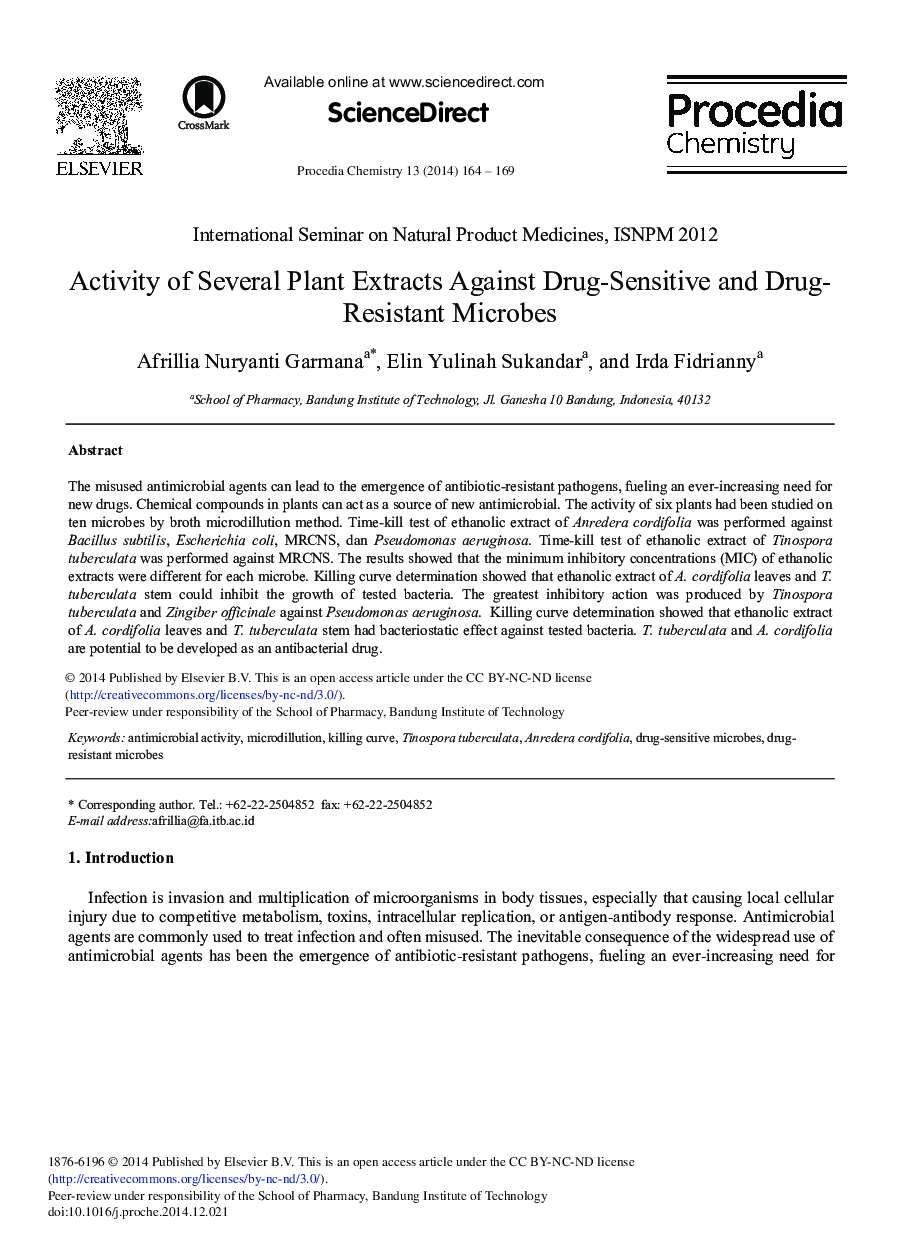| Article ID | Journal | Published Year | Pages | File Type |
|---|---|---|---|---|
| 240433 | Procedia Chemistry | 2014 | 6 Pages |
The misused antimicrobial agents can lead to the emergence of antibiotic-resistant pathogens, fueling an ever-increasing need for new drugs. Chemical compounds in plants can act as a source of new antimicrobial. The activity of six plants had been studied on ten microbes by broth microdillution method. Time-kill test of ethanolic extract of Anredera cordifolia was performed against Bacillus subtilis, Escherichia coli, MRCNS, dan Pseudomonas aeruginosa. Time-kill test of ethanolic extract of Tinospora tuberculata was performed against MRCNS. The results showed that the minimum inhibitory concentrations (MIC) of ethanolic extracts were different for each microbe. Killing curve determination showed that ethanolic extract of A. cordifolia leaves and T. tuberculata stem could inhibit the growth of tested bacteria. The greatest inhibitory action was produced by Tinospora tuberculata and Zingiber officinale against Pseudomonas aeruginosa. Killing curve determination showed that ethanolic extract of A. cordifolia leaves and T. tuberculata stem had bacteriostatic effect against tested bacteria. T. tuberculata and A. cordifolia are potential to be developed as an antibacterial drug.
